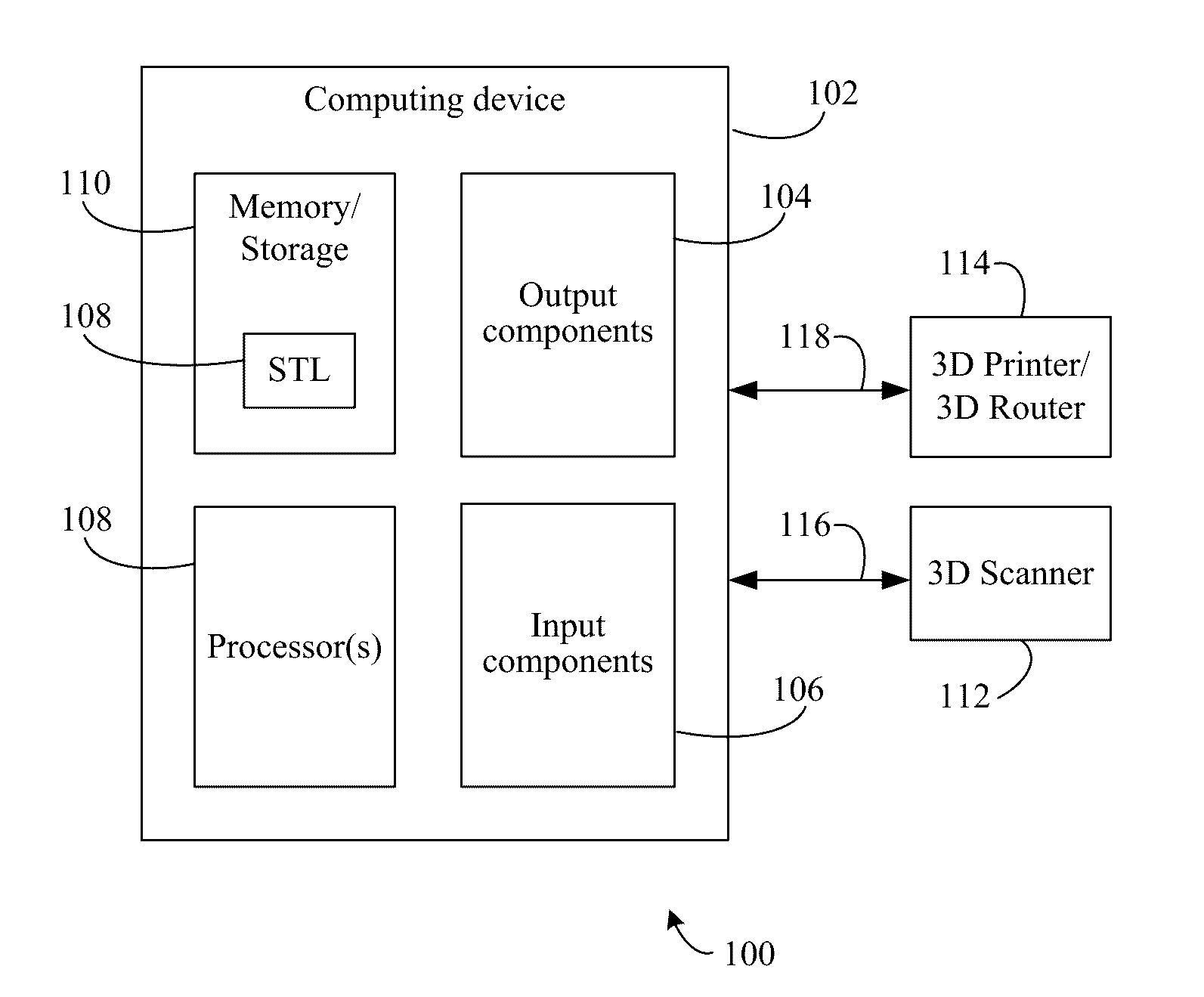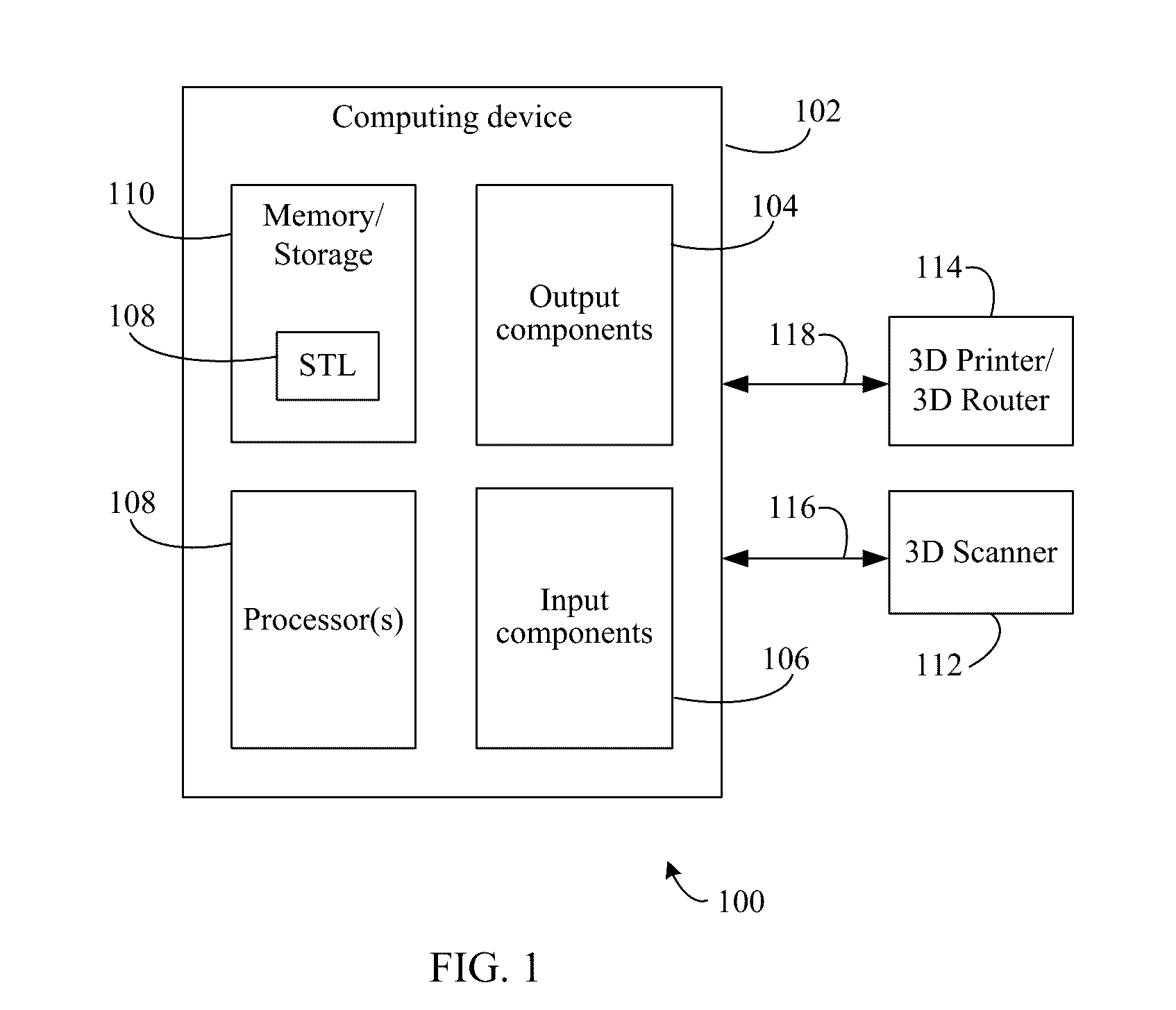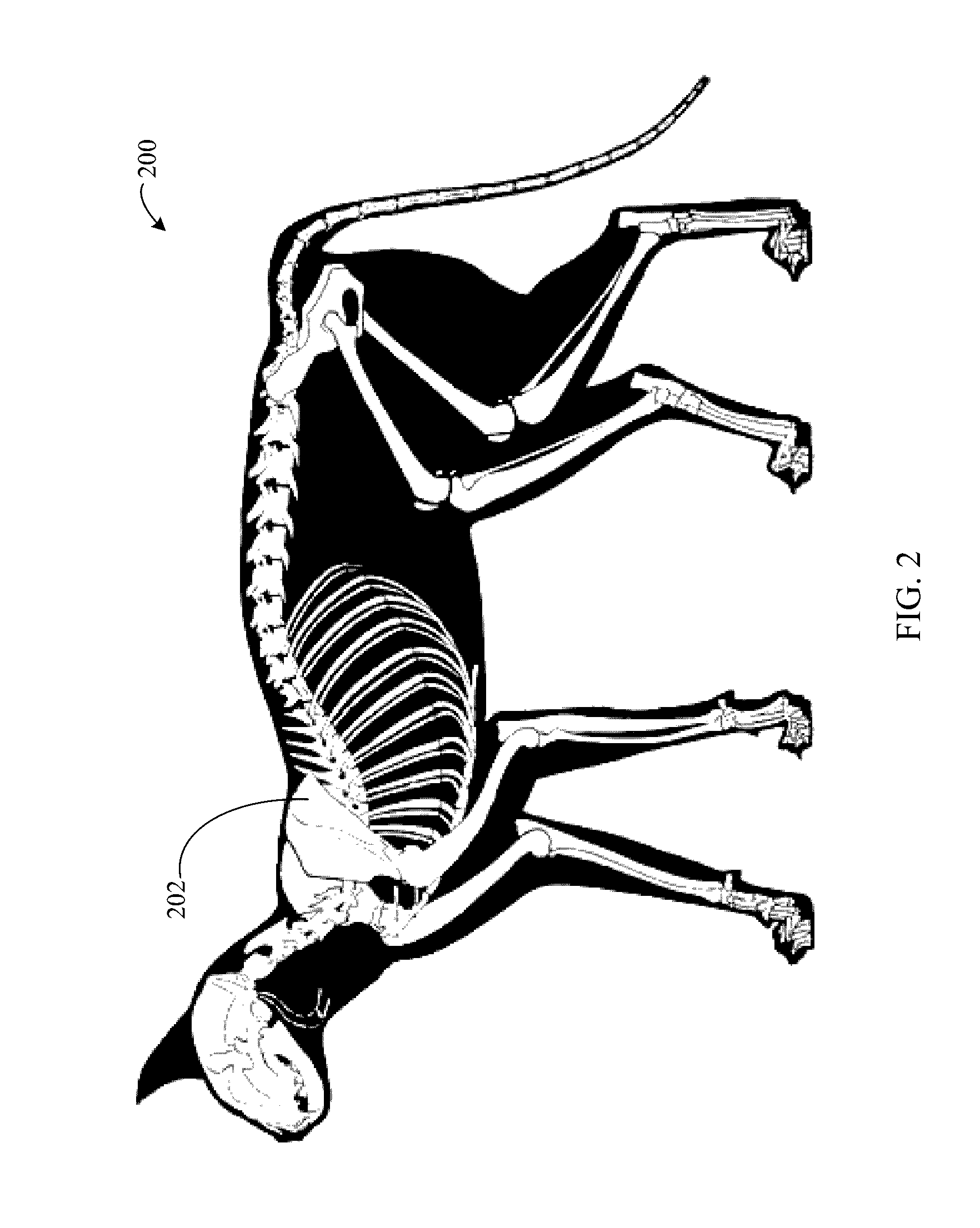Method, system, and apparatus for biological model symmetry
a biological model and symmetry technology, applied in the field of biological model symmetry, can solve problems such as flaws and/or asymmetrical characteristics of vertebrate specimens
- Summary
- Abstract
- Description
- Claims
- Application Information
AI Technical Summary
Benefits of technology
Problems solved by technology
Method used
Image
Examples
example embodiments
II. Example Embodiments
[0027]The example techniques and embodiments described herein may be adapted to various types of manufacturing devices and systems, computing systems, electronic and / or processing devices, and / or the like, to create symmetric biological models. The example techniques and embodiments described herein may be adapted to various types of biological specimens for symmetric model creation. For example, biological specimens, such as vertebrate specimens, may be used in the taxidermy industry to create representations or replications thereof, referred to as mounts. Trophy animals and “big game” animals are often processed using taxidermy methods for hunters and / or collectors. Such animals may include, without limitation, small or large cats, small or large hoofed animals such as types of deer, moose, elk, gazelle, etc., giraffes, elephants, wild hogs, canines, and / or the like. For instance hides, horns or antlers, skulls and other parts of the skeletal structure, etc....
example model embodiments
IV. Example Model Embodiments
[0050]Various techniques for generating symmetric biological models using, e.g., system 100 and / or computing device 102 of FIG. 1 described above, are contemplated herein. The various techniques and embodiments provided for implementing devices and systems to generate symmetric biological models may be performed or carried out in different ways. For instance, in embodiments, a processing device or system may be programmed and / or utilized to perform a method to generate a symmetric biological model(s). Likewise, fabrication and / or manufacturing devices and systems may be programmed and / or utilized to perform a method to generate a symmetric biological model(s) as described in this section.
[0051]Turning now to FIG. 2, an exemplary biological specimen 200 is shown. While biological specimen 200 is illustrated as a member of the cat family (felidae), other biological specimens (e.g., of any animal families) are contemplated herein, e.g., animals belonging to...
example operational embodiments
IV. Example Operational Embodiments
[0074]Embodiments and techniques, including methods, described herein may be performed in various ways such as, but not limited to, being implemented by hardware, software, firmware, and / or any combination thereof. Symmetric biological model system 100 of FIG. 1, along with any subcomponents thereof, as well as processor and computer embodiments described below, may each operate according to one or more of the flowcharts described in this section. Additionally, model data and physical models associated with biological specimens as described herein (e.g., base model 300 of FIG. 3, base model 400 of FIG. 4, base model portion 500 of FIG. 5, symmetric base model portion 700 of FIG. 7, and / or symmetric biological model 900 of FIG. 9), and any subcomponents thereof, may be created and / or generated according to one or more of the flowcharts described in this section. Other structural and operational embodiments will be apparent to persons skilled in the ...
PUM
| Property | Measurement | Unit |
|---|---|---|
| Symmetric field theory | aaaaa | aaaaa |
Abstract
Description
Claims
Application Information
 Login to View More
Login to View More - R&D
- Intellectual Property
- Life Sciences
- Materials
- Tech Scout
- Unparalleled Data Quality
- Higher Quality Content
- 60% Fewer Hallucinations
Browse by: Latest US Patents, China's latest patents, Technical Efficacy Thesaurus, Application Domain, Technology Topic, Popular Technical Reports.
© 2025 PatSnap. All rights reserved.Legal|Privacy policy|Modern Slavery Act Transparency Statement|Sitemap|About US| Contact US: help@patsnap.com



